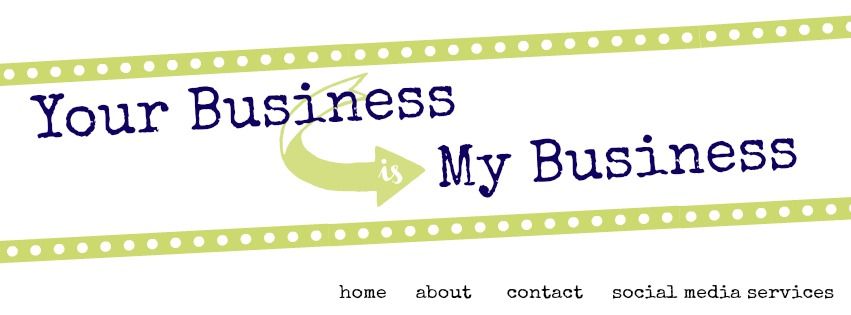 The big buzzwords that I see everytime I turn around these days start with CROWD...
The big buzzwords that I see everytime I turn around these days start with CROWD...What is CROWDSOURCING? CROWDFUNDING? And one that's new to me... CROWDSOLVING? And how do any of them apply to your small business?
Most of the time I would say that the best answer would be to get your head out of the "crowds" and forget about it, but I think these buzzwords are worth learning more about!
SMBs (small and medium sized businesses) can benefit tremendously from taking advantage of current technology to use the "crowd" (general public) to help them with staffing, (crowdsourcing) funding a new project (crowdfunding) and brainstorming to solve problems! (crowdsolving)
In this three part series, I'll explain how the new CROWDS can help your small business!
CROWDSOURCING:
According to Wikipedia - itself one of the best examples of the technique - crowdsourcing is a distributed problem-solving and production model ... problems are broadcast to an unknown group of solvers ["the crowd"] in the form of an open call for solutions.Solving a business problem, especially staffing issues, by utilizing the talents of a large group is the idea, and benefits of crowdsourcing are flexibility and cost savings.
For example, a full-service Web development company might not find it cost-effective to offer its entire suite of services through the crowdsourcing model, but it could regularly bid on graphic design opportunities and use them to open doors to broader web development work. A growing number of service providers on crowdsourcing websites are highly specialized and want to focus exclusively on certain types of work. SMBs can use those sites to leverage the experience and expertise of these professionals on behalf of their own clients, often making it possible for the SMB to compete with much larger entities at a fraction of the cost.
Now crowdsourcing is creeping further into the business world, with virtually endless applications.
Crowdsourcing in Action
To best understand how crowdsourcing works and could be used by your business, let's take a look at some real-world examples.New product development:
MarketingSherpa reported on an electrical products manufacturer seeking to grow beyond its traditional customer base turned to crowdsourcing and created an online portal where electricians, contractors and inventors could submit ideas for new products. Toy manufacturers have done likewise: Lego has the CUUSOO microsite, and Mattel used crowdsourcing to decide which career the next Barbie doll should have. Even food makers have gotten into the act: Check out these crowdsourcing case studies on Mashable about Ben & Jerry's, Dunkin' Donuts, and Vitaminwater.
Building software:
Many of us are now familiar with the term "open source," which basically refers to free software developed collaboratively and shared by developers and programmers worldwide. Linux might be the most well-known crowdsourced software, but communities like SourceForge continue to create other new open source software.
Web design and development:
Sites like 99Designs or Crowdspring create an open marketplace where designers can submit designs on a name-your-own-price model; you choose the one you like. The website Threadless has even built its entire business model on crowdsourced T-shirt designs.
Advertising and marketing ideas:
Sometimes the best advertising and marketing ideas don't come from a big agency; they come from your audience. Witness Ford's first television commercial for its 2013 Focus ST. Inviting attendees to a stunt demo of the new car, Ford asked people to film the event and submit the footage. "About 100 spectators uploaded 580 videos and Ford used bits from 20 different people to create the spot," the Wall Street Journal reported.
Research:
Crowdsourcing can be used for all kinds of other research projects, from the simplest (requests to take a poll or survey) to more complex (identifying patients for health research trials).
Sharing information:
Course Hero "offers some 7 million crowdsourced college study materials" and has turned crowdsourcing into a viable business model.
Labor:
Need something done? Try Amazon's marketplace for skilled labor:Mechanical Turk. Need a small or odd task done? Try Fiverr or Tenerr.
Generating content.
Lots of different great examples exist, from reporting on news/conducting citizen journalism (NewsIT; spot.us) to authoring whole books ("Enterprise Social Technology") to generating just about any other content task (Scripted).
Fundraising: Crowdsourcing now enables peers to evaluate and loan money to other peers. For creative ventures, there are sites like Kickstarter, while for businesses, there'sProsper and Lending Club.
More examples of crowdsourcing can be found on AdRants.
Try It Yourself
Through these examples, by now you've probably seen why you might want to crowdsource:
- Execute work you might not be able to do on your own
- Find solutions to problems
- Generate new ideas
- Tap into diverse thinking
- Reduce expenses
- Save time
- Create things
Then take your mission to the crowd, through any number of online or off-line channels. You could seek assistance from those who already have raised their hand to help (conduct searches, go to resource sites, ask your network for contacts), or you could just put your request out there (to your social network, for example) to see what kind of responses you get.
Only you can judge when the right time to crowdsource might be--but, generally speaking, if you have a specific challenge or task, and think there's more than one way to get from where you are to where you want to go, chances are good that crowdsourcing can help.
adapted from http://www.inc.com/hollis-thomases/how-to-crowdsource-anything.html


No comments:
Post a Comment